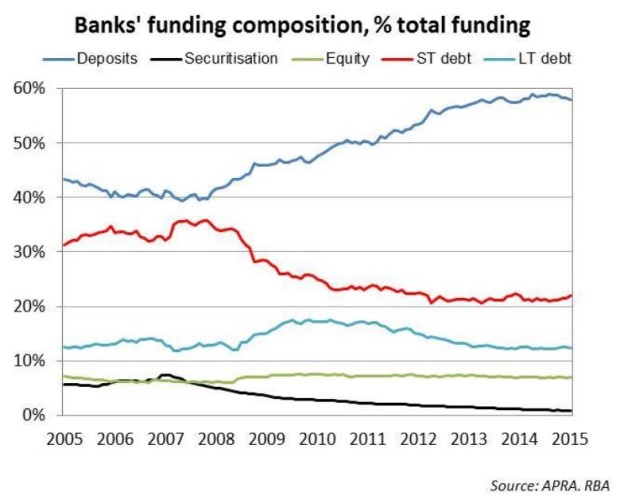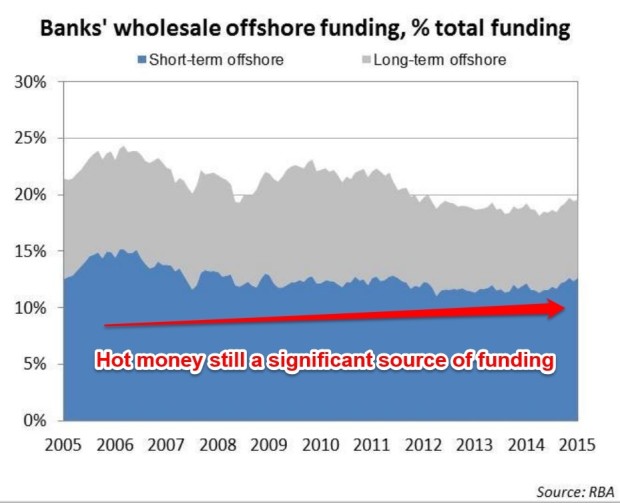Australia’s banking regulator says Australian banks are still too reliant on short-term offshore funding
Australian banks have materially improved their funding composition in the wake of the GFC with deposit funding increasing from around 40% up to the current level just under 60%.
Deposits are generally more sticky in times of trouble, so that is a big improvement in the overall funding profile of the banking industry and its related liquidity position.
APRA chairman Wayne Byers highlighted this change in a speech to the Actuaries Institute Banking on Change Seminar in Sydney yesterday.
The overall funding profile of the Australian banking system has improved in the post-crisis environment. ADIs have sourced a much greater proportion of their funding from deposits, and reduced their reliance on short-term wholesale debt. It’s difficult to know how much of this is regulatory-induced change, and how much is bank liquidity risk management practices being recalibrated to take account of the experiences of late 2008, but these compositional changes should strengthen liquidity and funding profiles overall.
But he did highlight that even after the change in overall composition of funding and improvement of the liquidity profile, Australia’s banking sector is still dangerously reliant on short-term “hot money” from offshore.
While the industry has reduced its reliance on short-term funding, wholesale funding and offshore funding, it has not materially reduced its reliance on the form of funding that is most likely and able to run in a crisis: short-term wholesale funding from offshore. That might seem paradoxical, but as a percentage of total funding, short-term wholesale offshore funding is virtually unchanged from a decade ago.
Importantly Byers said that Australia’s big banks, who need to meet APRA’s new “Net Stable Funding Ratio” when it is introduced in 2018, will not “easily meet the new standard and, as things stand today, international comparisons are not favourable to them”.
Given it’s liquidity, not capital, which usually brings financial institutions unstuck in times of crisis, Byers said this is an “important issue to address” for banks and some “further lengthening of Australian bank maturity profiles is therefore likely to be needed over time to truly strengthen their funding resilience”.
That’s necessary if Australian banking is going to meet the Murray Inquiry’s recommendation that Australian banks should be “unquestionably strong”.





